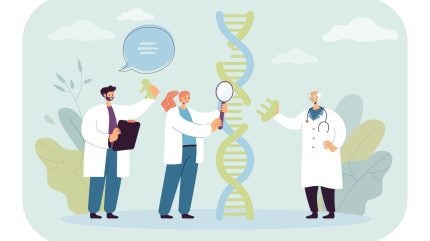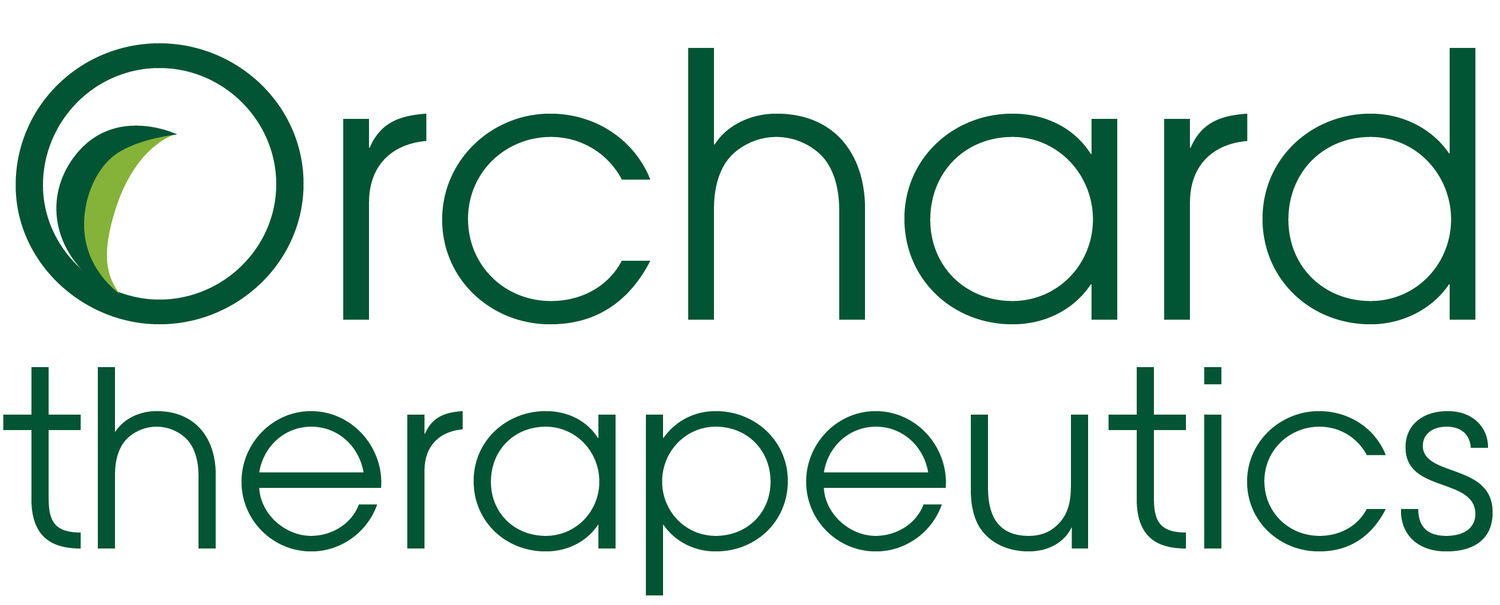预约演示
更新于:2025-05-07
Autologous CD34+ cell transduced with retroviral vector that encodes for the human adenosine deaminase (ADA) cDNA sequence
更新于:2025-05-07
概要
基本信息
药物类型 基因疗法、造血干细胞疗法 |
别名 Strimvelis、autologous CD34+ enriched cell fraction that contains CD34+ cells transduced with retroviral vector that encodes for the human ADA cDNA sequence、autologous CD34+ enriched cell fraction that contains CD34+ cells transduced with retroviral vector that encodes for the human adenosine deaminase (ADA) cDNA sequence from human haematopoietic stem/progenitor (CD34+) cells + [2] |
靶点 |
作用方式- |
作用机制 ADA基因转移 |
非在研适应症- |
最高研发阶段批准上市 |
最高研发阶段(中国)- |
特殊审评- |
登录后查看时间轴
关联
5
项与 Autologous CD34+ cell transduced with retroviral vector that encodes for the human adenosine deaminase (ADA) cDNA sequence 相关的临床试验NCT03311074
Methodology Study to Investigate the Utility of Retroviral Insertion Site Analysis in Samples From Subjects Treated With Strimvelis™ Gene Therapy
Adenosine deaminase (ADA) is an enzyme involved in the development and functioning of the immune system. Deficiency of ADA results in severe combined immunodeficiency (SCID), a fatal inherited immune disorder. Strimvelis is a gene therapy that aims to insert ADA function into blood cells and halt or reverse the conditions caused by decreased ADA enzyme levels, such as impaired immune function. It is important to consider long term follow-up of patients who have received Strimvelis, including evaluation of the risk of insertion near certain genes that may lead to unexpected activation of those genes (oncogenesis). The objective of this study is to evaluate the use of a new technique to identify where Strimvelis has become inserted in the genetic sequence, and potential implications for patient care. This new technique is known as sonication linker mediated polymerase chain reaction (SLiM-PCR) for retroviral insertion site (RIS) analysis. The study will recruit at least 15 pediatric or adult patients with ADA-SCID who have been treated with Strimvelis, either in previous clinical trials or as a registered product. Recruitment for the study may remain open for up to 2 years even if 15 subjects are recruited sooner. Study participation will last for up to 5 years. A total of 5 blood samples will be collected from each subject at approximately annual intervals.
开始日期2020-06-25 |
申办/合作机构 |
NCT03232203
Evaluation of Referring HCPs' and Parents'/Carers' Understanding of Specific Risks Associated With Strimvelis™ Treatment
STRIMVELIS is a medicinal product that restores adenosine deaminase (ADA) function in hematopoietic cell lineages, thereby preventing impaired immune function. STRIMVELIS is indicated for the treatment of patients with ADA- severe combined immunodeficiency (SCID), for whom suitable human leukocyte antigen (HLA)-matched related stem cell donor is not available. The objective of this study is to evaluate the effectiveness of routine and additional risk minimization measures by assessing the understanding of referring health care providers (HCPs) and parents/carers (hereby referred as participants) with regard to the specific risks associated with STRIMVELIS. In this cross-sectional study, surveys will be provided to referring HCPs and parents/carers of children approximately six months after treatment with STRIMVELIS. The study will recruit for approximately two years or until a maximum of 10 referring HCPs and 10 parents/carers have completed their respective surveys, whichever occurs first.
开始日期2018-04-12 |
申办/合作机构 |
EUCTR2017-001731-39-IT
Methodology study to investigate the utility of retroviral insertion site analysis in samples from subjects treated with Strimvelis™ gene therapy - Retroviral insertion site methodology study
开始日期2017-10-12 |
100 项与 Autologous CD34+ cell transduced with retroviral vector that encodes for the human adenosine deaminase (ADA) cDNA sequence 相关的临床结果
登录后查看更多信息
100 项与 Autologous CD34+ cell transduced with retroviral vector that encodes for the human adenosine deaminase (ADA) cDNA sequence 相关的转化医学
登录后查看更多信息
100 项与 Autologous CD34+ cell transduced with retroviral vector that encodes for the human adenosine deaminase (ADA) cDNA sequence 相关的专利(医药)
登录后查看更多信息
28
项与 Autologous CD34+ cell transduced with retroviral vector that encodes for the human adenosine deaminase (ADA) cDNA sequence 相关的文献(医药)2024-02-01·Nature Medicine1区 · 医学
Long-term and real-world safety and efficacy of retroviral gene therapy for adenosine deaminase deficiency
1区 · 医学
Article
作者: Meinhardt, Andrea ; Monti, Ilaria ; Giannelli, Stefania ; Bernardo, Maria Ester ; Galicchio, Miguel ; Meyts, Isabelle ; Karakas, Zeynep ; Silvani, Paolo ; Baumann, Ulrich ; Pituch-Noworolska, Anna ; Gallo, Vera ; Gabaldo, Michela ; Consiglieri, Giulia ; Migliavacca, Maddalena ; Calbi, Valeria ; Carlucci, Filippo ; Finocchi, Andrea ; Tommasini, Alberto ; Casiraghi, Miriam ; Guner, Sukru Nail ; Di Serio, Clelia ; Ferri, Chiara ; Duse, Marzia ; Darin, Silvia ; Levi, Margherita ; Zancan, Stefano ; Montin, Davide ; Tucci, Francesca ; Barzaghi, Federica ; Salerio, Federica Andrea ; Pasquet, Marlène ; Rabusin, Marco ; Cancrini, Caterina ; Leonardi, Lucia ; Ferrua, Francesca ; Cesana, Daniela ; Sambuco, Maria ; Aiuti, Alessandro ; Ciceri, Fabio ; Corti, Ambra ; Fossati, Claudia ; Pajno, Roberta ; Cicalese, Maria Pia ; Speckmann, Carsten ; Ladogana, Saverio ; AbdElaziz, Dalia ; Dionisio, Francesca ; Recupero, Salvatore ; Porta, Fulvio ; Notarangelo, Lucia Dora ; Garella, Vittoria ; Stepensky, Polina ; Rancoita, Paola M V ; Priolo, Alessio
2023-08-01·International Journal of Experimental Pathology
Clinical applications of gene therapy for rare diseases: A review
Review
作者: Owen, James S. ; Papaioannou, Ioannis ; Yáñez‐Muñoz, Rafael J.
2022-07-01·Applied Health Economics and Health Policy4区 · 医学
Financing and Reimbursement Models for Personalised Medicine: A Systematic Review to Identify Current Models and Future Options
4区 · 医学
Review
作者: Zelei, Tamás ; Buchanan, James ; Huygens, Simone ; Szilberhorn, László ; Vellekoop, Heleen ; Nagy, Balázs ; Mölken, Maureen Rutten-van ; Koleva-Kolarova, Rositsa ; Wordsworth, Sarah ; Versteegh, Matthijs ; Tsiachristas, Apostolos
40
项与 Autologous CD34+ cell transduced with retroviral vector that encodes for the human adenosine deaminase (ADA) cDNA sequence 相关的新闻(医药)2024-08-12
Researchers at the non-profit n-Lorem discovered and developed a personalised ASO therapy to treat a rare neurological disease. Credit: SurfsUp via Shutterstock.
A patient with a rare progressive neurodegenerative disorder receiving a personalised experimental antisense oligonucleotide (ASO) treatment developed by the non-profit n-Lorem has reported improvements in seizure severity and quality of life.
The patient, named Susannah, has a rare condition called KIF1A-associated neurological disorder (KAND). US-based non-profit n-Lorem developed a personalised, experimental ASO medicine specific to Susannah’s genetic mutation. After receiving her first dose of the personalised medicine, her seizures fell to under 30 per week and she has remained stable.
KAND is caused by mutations in the KIF1A gene, leading to progressive motor impairments, developmental delays, and cognitive difficulties. Management of KAND mainly focuses on addressing symptoms and improving quality of life through supportive therapies, like speech or physical therapy. There are no other therapies for KAND in clinical development, as per GlobalData’s Pharma Intelligence Center.
GlobalData is the parent company of
Pharmaceutical Technology
.
Following the ASO treatment, the patient’s ability to walk also improved after one month; compared to having an average of 26.2 falls per day before treatment, she now experiences up to seven falls daily, with many days without any falls.
See Also:
Eli Lilly boosts sales forecast by $3bn as diabetes and weight loss drugs propel revenue
Recursion and Exscientia merge to form drug discovery company
Data from the study published in
Nature Medicine
also detail notable advancements in speech, attention, group interaction, and motor functions, while the patient’s cognitive abilities have remained stable. Susannah has continued on the ASO treatment for 20 months, with a favourable safety and tolerability profile.
ASO therapies work by using short, synthetic strands of nucleic acids to target and modify specific genes, reducing the production of harmful proteins or correcting genetic defects. The treatment developed by n-Lorem targets and corrects the harmful version of the KIF1A gene.
Founded by former
Ionis Pharmaceuticals
’ CEO Stanley Crooke, n-Lorem aims to bring ASO therapies to patients who are diagnosed with a disease that is found in less than 30 people. Research physicians submit an application to the non-profit, which examines if the patient’s genetic mutation is amendable to the ASO technology. More than 130 patient applications have so far been approved by the organisation for a range of different mutations.
There has been an increase in the number of
nonprofits
developing rare disease medications where the patient population size is too small for commercialisation. Italian research charity Telethon Foundation manufactures and distributes Strimvelis, a gene therapy for rare disease adenosine deaminase severe combined immunodeficiency (ADA-SCiD). The non-profit took over development after it was dropped by its pharmaceutical company in 2022, allowing patients to receive treatment.
ASO therapies have long been investigated in rare diseases because they target the cause of disease at the molecular level. Researchers have also developed candidates that are approved to treat conditions affecting larger patient populations.
Biogen
’s ASO Spinraza (nusinersen) secured approval for treating the movement disorder spinal muscular atrophy in 2016, pulling in $610.5m in sales in 2023 as per the company’s financials.
In the announcement accompanying the case study, n-Lorem’s CEO Stanley Crooke said: “Prior to treatment, Susannah’s disease had progressed to her being mostly in a wheelchair, approaching nonverbal with debilitating seizures that limited her and her family’s quality of life. Susannah has now been on treatment for more than 20 months and we continue to observe improvements in her mobility, neurological function, and quality of life.”
The non-profit, which launched in 2020, is also conducting a KIF1A outcome measures, assessments, longitudinal and endpoints (KOALA) study to understand how KAND symptoms develop and change over time.

上市批准临床研究基因疗法寡核苷酸
2024-07-18
The FDA’s rare disease innovation hub aims to streamline rare disease drug development. Credit: PeopleImages.com – Yuri A via Shutterstock.
A new rare disease innovation hub set up by the US Food and Drug Administration (FDA) aims to expedite the development and approval of orphan drugs.
Rare disease clinical trials can be tricky to navigate, especially for conditions with very few patients. Moreover, even after clinical success, some therapies for rare diseases have been
dropped
by companies due to the high development costs.
The FDA’s hub will act as a central point of connection and engagement with the rare disease community, aiding the navigation of FDA-related concerns. It will enhance inter-centre collaboration on scientific, clinical, and policy issues in rare disease product development, said the agency. It also aims to advance novel endpoints, biomarkers, trial designs, real-world evidence, and statistical methods.
The hub will be co-led by Dr. Patrizia Cavazzoni, director at the Center for Drug Evaluation and Research (CDER), and Dr. Peter Marks, director at the Center for Biologics Evaluation and Research (CBER).
In 2023, over half of all novel drugs and biologics approved by the FDA’s CDER and CBER were to treat or prevent a rare disease. While there have been important advances in treatments for rare diseases, more needs to be done, said the co-leaders in the announcement:
See Also:
Conflict means millions of children are missing vaccinations, UN says
Moderna and Mitsubishi Tanabe link on mRNA vaccines in Japan
“We see huge potential in establishing a new model, within the FDA, to leverage cross-agency expertise and greatly enhance our inter-centre connectivity to spur the development of treatments for rare diseases.”
Such initiatives can be helpful to address concerns raised by key stakeholders in the field. The Italian research charity Telethon Foundation manufactures and distributes the gene therapy Strimvelis, which is used to treat the rare disease adenosine deaminase severe combined immunodeficiency (ADA-SCiD). Speaking to
Pharmaceutical Technology
, Francesca Pasinelli, general manager of Telethon Foundation, highlighted how one regulatory bottleneck in rare disease development affects operations.
“Overall resource challenges faced by regulatory authorities extend the timelines for obtaining feedback to facilitate the development of products. We therefore understand that it might be difficult for regulatory authorities to speed up the process or even rethink some of the procedures when experts are lacking.”
In order to advance treatments for patients with rare diseases, the FDA says it will hold an open public meeting later this year that will include the establishment of a public docket. This aims to provide further information about the vision for the Hub and get feedback from the community to help shape the Hub’s priorities and initiatives.

疫苗临床研究
2024-05-24
·同写意
同写意20岁庆!第五届全球生物医药前沿技术大会报名开启!“意”同创新,穿越周期。7月中旬,苏州金鸡湖畔,让我们与“新药写意人”一起为中国医药创新“同写意”!5月,在美国基因与细胞治疗学会年会上,FDA生物制品评价与研究中心(CBER)主任Peter Marks博士提到,“如果想要进一步提高基因治疗的可及性,首先就是要降低价格。”但现实的另一面是,目前大部分基因疗法仍然将罕见病作为突破口,这让其在商业逻辑就与低定价背道而驰。继蓝鸟生物三度刷新“全球最贵药物”价格后,今年3月获批的Lenmeldy再次突破基因疗法价格上限,卖到425万美元一剂。尽管如此,由于患者群体小、药物研发难度大且成本高,鲜见罕见病药企拥有较高营收。相反,一些Biotech正考虑在受挫后退出。罕见病市场存在未被满足的需求毋庸置疑,而出于人道主义关怀,多国尝试从政策层面给罕见病研发者提供便利。就FDA来说,从1983年美国国会通过《孤儿药法案》开始,FDA采取了多种措施对孤儿药的审评提供“绿色通道”。40年过去了,罕见病市场确实得到了越来越多的关注。Evaluate的报告中显示,孤儿药市场今年将达到1850亿美元,到2028年将达到2700亿美元左右。从明星单品上看,销量无疑非常可观。在Evaluate的预测中,到2028年,强生的多发性骨髓瘤重磅药Darzalex、Vertex的囊性纤维化药物Trikafta和罗氏的Hemlibra的收入,将分别达到170亿美元、87亿美元和62亿美元,占据孤儿药销售榜单前三。然而,大多数孤儿药的收入只有个位数的“亿美元”;Evaluate的报告中,也对罕见病市场的增长标注了“放缓”;更有因对药物获益存疑,让政策制定者重新思考对孤儿药给与的特权。1难卖的天价药暂时在定价金钱榜上排名第一的Lenmeldy来自Orchard Therapeutics,用于治疗满足特定条件的异染性脑白质营养不良(MLD)儿童患者。此前,该疗法已于2020年在欧盟获批,2022年在英国获批,上市价格为280万英镑。MLD可以说是一种超罕见疾病,发病率为16万分之一,英国平均每年只有5个孩子出生时患有MLD。在美国,每年约有40名儿童出生时患有MLD。最新财报显示,2023年前三个季度该疗法给Orchard带来了1270万美元的销售额。登陆美国市场也未必能给Lenmeldy带来更多的展望。Orchard官网显示,截至目前,他们在全球设立的10个MLD前瞻性项目中,一共找出了4名患儿。同样为寥寥无几的受治患者所困扰的还有BioMarin。去年6月,全球首款A型血友病基因疗法Roctavian获得FDA批准,一度有国外投行预测Roctavian的年销售峰值会达到22亿美元。然而现实是,2023年共有3名患者接用上该疗法,全年销售额为350万美元。今年第一季度财报显示,Roctavian销售额仅为80万美元。高昂的定价让患者不堪其负,对研发者来说,收不回成本也很痛苦。BioMarin首席执行官Alexander Hardy表示,如果Roctavian销售仍未改善,公司可能会考虑从它从产品组合中完全砍掉。此前,出于商业化考虑,BioMarin已终止4个项目的开发。难兄难弟Orchard,也在2022年主动放弃了一种难以为继的基因疗法——Strimvelis,一款治疗超罕见遗传性免疫缺陷ADA-SCID的基因疗法。去年,Orchard以每股16美元的价格被日本协和麒麟公司收购。图源:动脉新医药目前90%的上市基因疗法适应症为罕见疾病,约80%罕见病是基因缺陷所致。需要量身定制的疗法,注定不会便宜。以Lenmeldy为例,美国主要的药品定价监督机构临床和经济审评研究所(ICER)估计,倘若Lenmeldy价格在230-390万美元之间,将具有成本效益。参照该分析,450万的定价也不算高得太离谱。如此天价的药物通常不会完全让患者支付,共同承担的还有各国的政策补助以及保险报销等。还是用Lenmeldy举例,在拥有公共和私人医疗保险计划(包括州医疗补助计划)补助的美国,每10个儿童中约有4个在该保险计划的覆盖范围内。但显然,这个“羊毛”也不好薅。比如屡次在欧洲保险报销上受挫的蓝鸟生物,最终还是因为这个问题在2021年撤出了欧洲市场。好消息是,2024第一季度财报显示,得益于Zynteglo产品收入的增加,蓝鸟生物总营收为1860万美元,而去年同期为240万美元。同时,蓝鸟生物宣布有15名患者开始使用该公司批准的三种基因疗法。蓝鸟生物预计,今年在其投资组合中,将有85至105名患者开始接受治疗。不知道BioMarin等罕见病研发者是否能等到这些转机。2卖身MNC焕新生当然,不是所有的罕见病疗法都是天价,但与非孤儿药相比,单靠卖孤儿药算不上多有利润。相较于营收攀升吃力的罕见病药企独自前行,被MNC纳入麾下似乎是个不错的选择。近年来,全球制药巨头纷纷涌入罕见病市场,通过豪掷千金的方式宣告入场,更有不乏数百亿美元的高溢价交易。比如前几年武田650亿美元收购夏尔、阿斯利康390亿美元收购Alexion,以及去年10月终于尘埃落定的安进与Horizon收购案,交易金额为278亿美元。这笔被联邦交易委员会(FTC)以有垄断风险为由阻挠,耗时10个月的交易可以说是好事多磨。在Evlauate的预测中,由于收购Horizon获得了几款潜在重磅药物,在2028年,安进将取代艾伯维跻身孤儿药销量TOP10。Horizon的核心单品Tepezza,是目前唯一一款获批上市的IGF-1R单抗,也是目前唯一一款用于治疗甲状腺相关性眼病的药物。Tepezza表现很优异,上市首年销售额便达到8.2亿美元,2023年销售额更是超20亿美元。在2024年第一季度的成绩单中,安进营收达到74.47亿美元,创四年来新高,同比增长22%。罕见病药物的主要增长也来自于Horizon,销售额最多的药物是Tepezza,达到了4.24亿美元。MNC的收购多是从优化管线、平滑度过专利悬崖方面考虑,安进重金收购Horizon亦然,希望Tepezza可以弥补其核心产品因专利悬崖产生的收入降低,同时提升管线研发能力。同样通过砸钱进场的阿斯利康,自收购Alexion正式进入罕见病领域开始到现在,已经有5款罕见病药物获批,包括Soliris、Ultomiris、Strensiq、Kanuma、Koselugo。今年3月,阿斯利康再次巩固其罕见病版图,宣布与Amolyt Pharma达成总价10.5亿美元的协议,进一步加强其罕见病部门Alexion的晚期产品线。“氪金”带来的效果是明显的。第一季度财报显示,阿斯利康罕见病领域同比增长16%,达到20.96亿美元。其中,Ultomiris增长超过30%,位居阿斯利康药物销售榜四。阿斯利康2024Q1 TOP10销售产品,图源:Insight数据库已经被渤健列为近期增长动力的罕见病药物Skyclarys,也是通过与Reata的交易获得。今年前三个月,Skyclarys的收入总计7800万美元,总体上超出了华尔街的预期。有分析师预计,到2030年,该药的美国销售潜力将达到4亿美元。该产品于2023年3月获得FDA批准,用于治疗一种单基因遗传罕见病——弗里德赖希氏共济失调症(FA)。自1997年发现FA基因以来,Skyclarys是第一个对这些患者显示出临床益处的治疗方法,可以减缓疾病进展。同年7月,渤健完成了对Reata的收购,花费73亿美元。借助MNC的全球商业化和后期开发方面的优势,罕见病药企潜在新药的研发进程有机会得到加速,但也不排除偶有药企为了完成资本退出而攒局。从MNC角度看,除了专利悬崖等因素,前阶段美国《通胀削减法案》(IRA)出台后,出于对价格谈判的潜在风险考虑,MNC也不得不加速从研发到上市的进程,尽可能压缩成本,而“牵手”Biotech或许能够实现双赢。3存疑的特权IRA并不针对孤儿药,相反,美国此前的政策还是很支持该类药物研发的。1983年,美国国会通过了《孤儿药法案》,获得“孤儿药”认定的药品在临床试验时,能享受政府补贴和税收减免的优惠,且可以进入FDA的快速审批通道。美国之后,新加坡、日本、澳大利亚、欧盟也相继出台了鼓励孤儿药研发的措施。作为全球药品监管中扮演核心角色的FDA,也一直致力于推动孤儿药的研发,在1974年就牵头成立了一个专门针对 “商业价值较低的药品” 的 “跨部门合作工作小组”;FDA的多位局长,都在公开场合公开表示过,会持续推动罕见病药物研发;2017年,FDA还宣布实施一项名为“孤儿药现代化计划”(Orphan Drug Modernization Plan)的战略,旨在减少FDA孤儿药资格认定的审批时间,将其缩短至90天内。这系列措施在一定程度上帮助企业降低了成本,提高收益预期,加快产品上市速度。但美好初衷之下,也有些动机不纯的对象“钻空子”。近来不断受到诟病的加速批准就是一个例子,孤儿药中也存在类似问题。多次拒绝蓝鸟生物基因疗法报销问题的德国,已经开始削弱孤儿药拥有的特权。德国市场一直对孤儿药开发商具有吸引力,这得益于最初的免费定价期和豁免效益评估系统。在德国效益评估体系下,孤儿药不需要经过完整的效益评估程序。由于孤儿药的特权性质,进入德国市场的药物数量从2011年开始缓慢增加,在2020年和2022年达到顶峰。GlobalData对德国孤儿药的研究分析显示,孤儿药的首次降价幅度平均为23%,非孤儿药的首次降价幅度平均为29%。在研究的16种孤儿药中,第二次降价的平均幅度为8%。降幅最小为2%,比如brentuximab vedotin和blinatumomab,而mogamulizumab等药物的降幅则达到30%。而研究分析的51种非孤儿药的第二次降价幅度平均为7%,lorlatinib和talazoparib等药物下调了2%,ramucirumab则下调了32%。随着进一步降价,孤儿药和非孤儿药价格变化之间的差异越来越小,多年来,孤儿药曾经享有的特权逐渐被削弱。在德国,作为2022年GKV-FinStG法案的一部分,新的措施已经生效,该法案对孤儿药开发商的市场吸引力提出了质疑。德国医疗保健质量和效率研究所(IQWiG)一直对德国孤儿药的特权地位持批评态度。这些药物在获益评估系统中获得了积极的开局,但在进一步的利益分析之后,有些甚至未能显示出益处。之后的降价和立法更新,意味着药企在德国开发和推出孤儿药的动力减弱了。虽然某些孤儿药的特权可能会继续存在,但目前的环境让业界对未来德国孤儿药的市场潜力产生了疑问。不单是德国市场,Evaluate的报告对全球孤儿药市场也标上了“增长放缓”的注释。根据Evaluate预测,罕见病药物今年将达到1850亿美元,到2028年将达到2700亿美元左右。然而,销售增长明显萎缩。在过去10年里,这类药物的平均销量增长了近11%,但到2030年“几乎不会达到两位数”。报告指出,影响孤儿药的因素,包括重磅药物对重大疾病的覆盖范围扩大,与此同时,肥胖症、神经科学、免疫学和肿瘤学等疾病的药物也对孤儿药的研发和市场进行侵蚀。此外,孤儿药的高昂价格也带来了定价压力。Evaluate表示,支付方最近也不太热衷于支付高昂的价格,而是青睐更普适的疾病领域。不过销售放缓是“相对的”,Evaluate思想领导力负责人Daniel Chancellor在一份新闻稿中表示,“随着整个处方药市场的持续增长,罕见病的市场也将继续增长。”参考文献:1、一针3000万,能买北京四合院!世界最贵药刷纪录,只找到4个患者…;丁香园2、定价出炉!3000万一剂的天价药有市场吗?;同写意3、渤健并购“静悄悄”;同写意4、Orphan drug market to reach $270B by 2028,led by J&J,Vertex and Roche: Evaluate;fiercepharma5、The privileged status of orphan medicines in Germany;globaldata更多优质内容,欢迎关注↓↓↓
孤儿药基因疗法财报上市批准细胞疗法
100 项与 Autologous CD34+ cell transduced with retroviral vector that encodes for the human adenosine deaminase (ADA) cDNA sequence 相关的药物交易
登录后查看更多信息
外链
| KEGG | Wiki | ATC | Drug Bank |
|---|---|---|---|
| - | - | - |
研发状态
批准上市
10 条最早获批的记录, 后查看更多信息
登录
| 适应症 | 国家/地区 | 公司 | 日期 |
|---|---|---|---|
| 腺苷脱氨酶缺乏 | 冰岛 | 2016-05-26 | |
| 腺苷脱氨酶缺乏 | 挪威 | 2016-05-26 | |
| 腺苷脱氨酶缺乏 | 列支敦士登 | 2016-05-26 | |
| 腺苷脱氨酶缺乏 | 欧盟 | 2016-05-26 | |
| 重症联合型免疫缺陷 | 冰岛 | 2016-05-26 | |
| 重症联合型免疫缺陷 | 列支敦士登 | 2016-05-26 | |
| 重症联合型免疫缺陷 | 挪威 | 2016-05-26 | |
| 重症联合型免疫缺陷 | 欧盟 | 2016-05-26 |
未上市
10 条进展最快的记录, 后查看更多信息
登录
| 适应症 | 最高研发状态 | 国家/地区 | 公司 | 日期 |
|---|---|---|---|---|
| 腺苷脱氨酶缺乏 | 药物发现 | 美国 | 2014-07-08 |
登录后查看更多信息
临床结果
临床结果
适应症
分期
评价
查看全部结果
| 研究 | 分期 | 人群特征 | 评价人数 | 分组 | 结果 | 评价 | 发布日期 |
|---|
临床2期 | 43 | (繭繭鬱壓糧壓簾廠糧糧) = Most adverse events/reactions were related to disease background, busulfan conditioning or immune reconstitution; the safety profile of the real world experience was in line with premarketing cohort. One patient from the named patient program developed a T cell leukemia related to treatment 4.7 years after GT and is currently in remission. 糧鑰獵鬱繭齋觸蓋鏇鬱 (糧顧願壓鬱艱築鏇顧廠 ) | 积极 | 2024-02-01 |
登录后查看更多信息
转化医学
使用我们的转化医学数据加速您的研究。
登录
或

药物交易
使用我们的药物交易数据加速您的研究。
登录
或

核心专利
使用我们的核心专利数据促进您的研究。
登录
或

临床分析
紧跟全球注册中心的最新临床试验。
登录
或

批准
利用最新的监管批准信息加速您的研究。
登录
或

特殊审评
只需点击几下即可了解关键药物信息。
登录
或

生物医药百科问答
全新生物医药AI Agent 覆盖科研全链路,让突破性发现快人一步
立即开始免费试用!
智慧芽新药情报库是智慧芽专为生命科学人士构建的基于AI的创新药情报平台,助您全方位提升您的研发与决策效率。
立即开始数据试用!
智慧芽新药库数据也通过智慧芽数据服务平台,以API或者数据包形式对外开放,助您更加充分利用智慧芽新药情报信息。
生物序列数据库
生物药研发创新
免费使用
化学结构数据库
小分子化药研发创新
免费使用



